The AMD Radeon RX 590 Review, feat. XFX & PowerColor: Polaris Returns (Again)
by Nate Oh on November 15, 2018 9:00 AM ESTMeet The Cards: XFX & PowerColor
As there are no reference cards, for today's launch AMD sampled us the XFX Radeon RX 590 Fatboy. PowerColor also sampled us their RX 590 Red Devil. Both sport modest factory overclocks over the reference 1545MHz boost, and both feature dual BIOS with performance and quiet options. Broadly-speaking, if you're already familiar with PowerColor's Red Devil and XFX's GTS designs for Polaris, then you'll already know what these boards are like.
| Radeon RX 590 Series Cards | ||||||
| XFX RX 590 Fatboy | PowerColor RX 590 Red Devil | Radeon RX 590 (Reference) | Radeon RX 580 (Reference) |
|||
| Boost Clock | 1580MHz | 1576MHz | 1545MHz | 1340MHz | ||
| Memory Clock | 8Gbps | 8Gbps | 8Gbps | 8Gbps | ||
| VRAM | 8GB | 8GB | 8GB | 8GB | ||
| TBP | TBA | TBA | 225W | 185W | ||
| Length | 10.63" | 10" | N/A | N/A | ||
| Width | 2.5 Slot | 2.5 Slot | N/A | N/A | ||
| Cooler Type | Open Air | Open Air | N/A | N/A | ||
| Price | TBA | ~$299? | $279 | $229 | ||
Both of the cards are relatively typical for custom factory overclocked designs, featuring thick heatsinks, dual axial fans, 1x8pin + 1x6pin for power, and the extremely essential presence of LEDs. Right now we don't have a definitive answer on price, but expect them to be in the high $200s to low $300s range where heavily factory-overclocked GTX 1060 6GB cards reside. For the opening launch window, all the partner cards are marked at the $279 SEP.
XFX Radeon RX 590 Fatboy
From the outside, the XFX Radeon RX 590 Fatboy looks to be much of the same with its existing RX 500 and 400 series models. The card's amusing namesake comes from the new heatsink design that XFX is calling the 'Fatboy Unibody VRM Heatsink,' and the company claims the design brings 50% greater heatsink surface area over previous RX 400/500 series cards. So it would seem it's an iteration on the Unibody VRM Heatsink introduced by RX RS and GTR series cards.
As silly as the 'Fatboy' name may be, it seems to have done its marketing job by raising interest, critical or otherwise, and for a subdued Polaris refresh SKU, that extra differentiation can be helpful.
And in terms of 'fatness', the RX 590 Fatboy has the 2.5 slot Double Dissapation style cooler, leading up to a height of 2.09". Thick, but perhaps not as thick as the Red Devil, which stands at 2.24". In any case, the card is neatly clad in an aluminum backplate. Right next to the PCIe power connections is the BIOS dip switch, toggling between Performance and Quiet/Lower RPM.
The display output situation is fairly standard for both cards, with 3 DisplayPorts, 1 HDMI, and 1 DL-DVI-D port.
PowerColor Red Devil Radeon RX 590
For the Red Devil RX 590, the thermal solution doesn't appear unchanged from the RX 580 version, sharing the same dimensions, 4x8mm + 1x6mm heatpipes, 6+1 power phases, and DrMos. At 10" long but 2.24" (57mm) high, the Red Devil RX 590 is a particuarly squat but thick card - just 3mm away from the standard triple-slot width. So prospective buyers should keep that in mind for smaller form factors, occupied neighboring PCIe slots, or chassis airflow management.
While the card has the red Red Devil LED, one of the more easily overlooked features is a small dip switch to disable LEDs. Both BIOS and LED switches are labelled so on the pentagram-emblazoned 1.5mm metal backplate.
Both the XFX Fatboy and PowerColor Red Devil have zero dB fan functionality as well, turning off the fans under certain temperatures and lighter workloads.


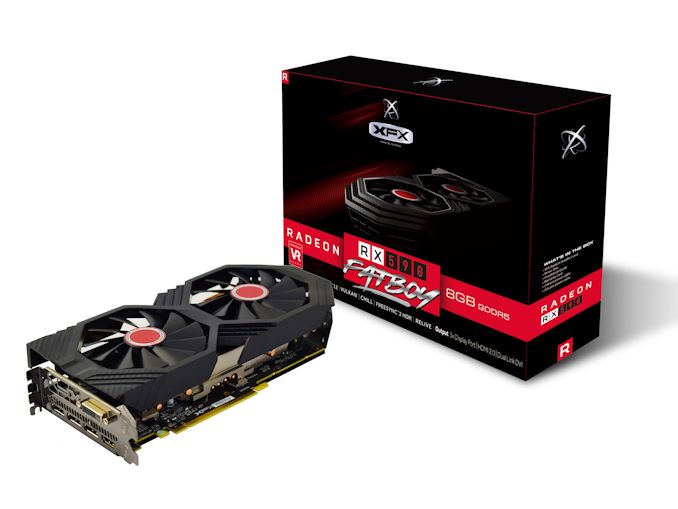
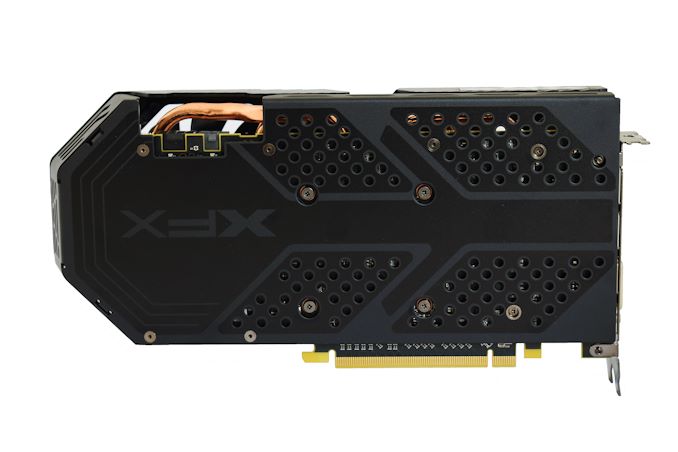
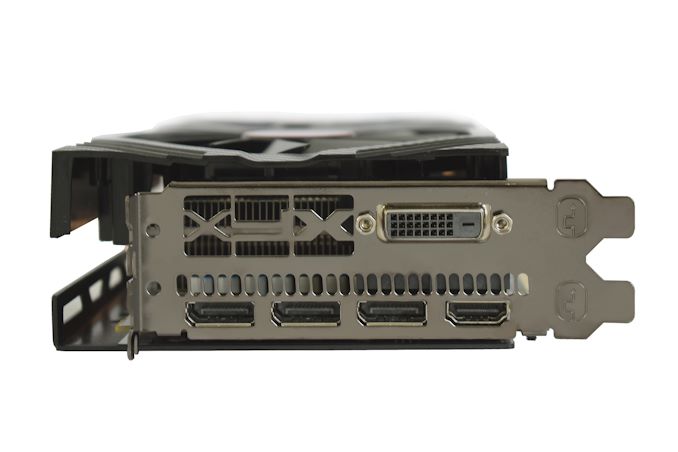
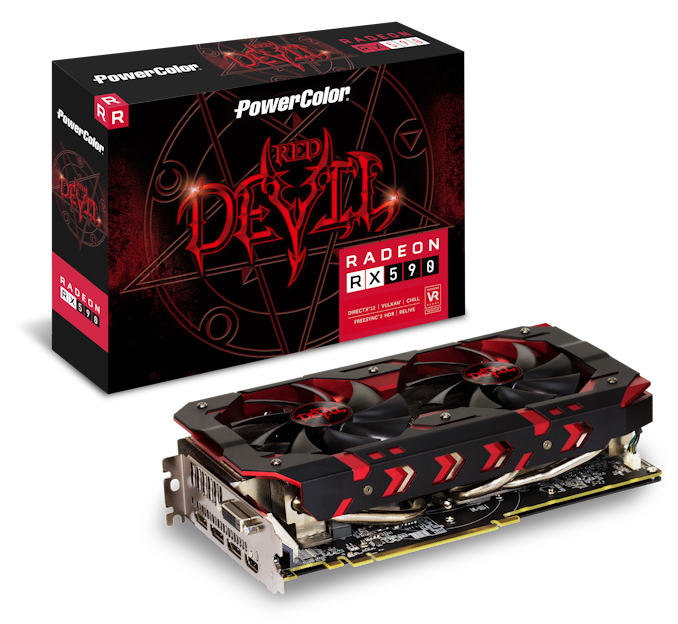
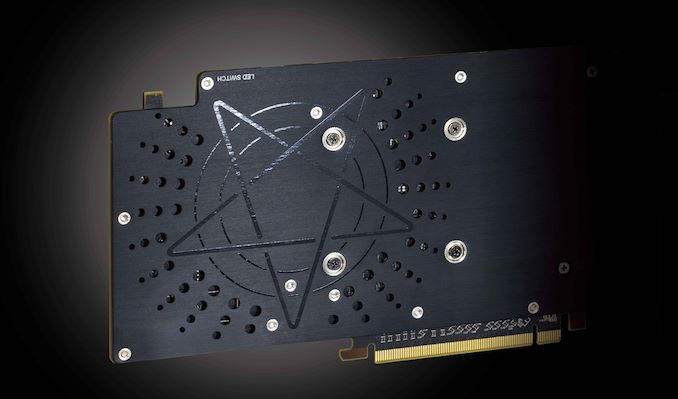








136 Comments
View All Comments
El Sama - Thursday, November 15, 2018 - link
To be honest I believe that the GTX 1070/Vega 56 is not that far away in price and should be considered as the minimum investment for a gamer in 2019.Dragonstongue - Thursday, November 15, 2018 - link
over $600 for a single GPU V56, no thank you..even this 590 is likely to be ~440 or so in CAD, screw that noise.minimum for a gamer with deep pockets, maybe, but that is like the price of good cpu and motherboard (such as Ryzen 2700)
Cooe - Thursday, November 15, 2018 - link
Lol it's not really the rest of the world's fault the Canadian Dollar absolutely freaking sucks right now. Or AMD's for that matter.Hrel - Thursday, November 15, 2018 - link
Man, I still have a hard 200 dollar cap on any single component. Kinda insane to imagine doubling that!I also don't give a shit about 3d, virtual anything or resolutions beyond 1080p. I mean ffs the human eye can't even tell the difference between 4k and 1080, why is ANYONE willing to pay for that?!
In any case, 150 is my budget for my next GPU. Considering how old 1080p is that should be plenty.
igavus - Friday, November 16, 2018 - link
4k and 1080p look pretty different. No offence, but if you can't tell the difference, perhaps it's time to schedule a visit with an optometrist? Nevermind 4K, the rest of the world will look a lot better also if your eyes are okay :)Great_Scott - Friday, November 16, 2018 - link
My eyes are fine. The sole advantage of 4K is not needing to run AA. That's about it.Anyone buying a card just so they can push a solid framerate on a 4K monitor is throwing money in the trash. Doubly so if they aren't 4->1 interpolating to play at 1K on a 4K monitor they needed for work (not gaming, since you don't need to game at 4K in the first place).
StevoLincolnite - Friday, November 16, 2018 - link
There is a big difference between 1080P and 4k... But that is entirely depending on how large the display is and how far you sit away from said display.Otherwise known as "Perceived Pixels Per Inch".
With that in mind... I would opt for a 1440P panel with a higher refresh rate than 4k every day of the week.
wumpus - Saturday, November 17, 2018 - link
Depends on the monitor. I'd agree with you when people claim "the sweet spot of 4k monitors is 28 inches". Maybe the price is good, but my old eyes will never see it. I'm wondering if a 40" 4k TV will make more sense (the dot pitch will be lower than my 1080P, but I'd still likely notice lack of AA).Gaming (once you step up to the high end GPUs) should be more immersive, but the 2d benefits are probably bigger.
Targon - Saturday, November 17, 2018 - link
There are people who notice the differences, and those who do not. Back in the days of CRT monitors, most people would notice flicker with a 60Hz monitor, but wouldn't notice with 72Hz. I always found that 85Hz produced less eye strain.There is a huge difference between 1080p and 2160p in terms of quality, but many games are so focused on action that the developers don't bother putting in the effort to provide good quality textures in the first place. It isn't just about not needing AA as much as about a higher pixel density and quality with 4k. For non-gaming, being able to fit twice as much on the screen really helps.
PeachNCream - Friday, November 16, 2018 - link
I reached diminishing returns at 1366x768. The increase to 1080p offered an improvement in image quality mainly by reducing jagged lines, but it wasn't anything to get astonished about. Agreed that the difference between 1080p and 4K is marginal on smaller screens and certainly not worth the added demand on graphics power to push the additional pixels.